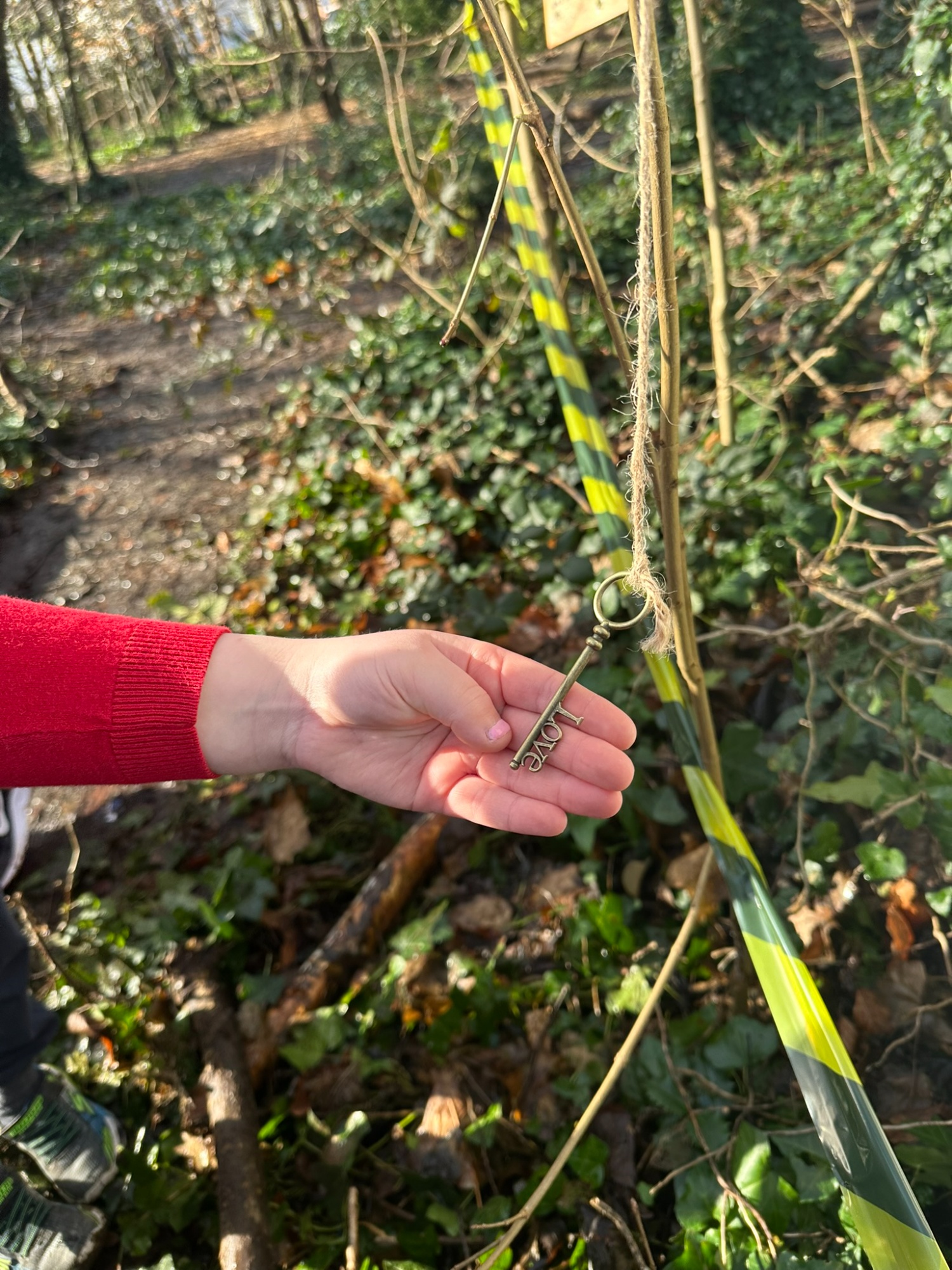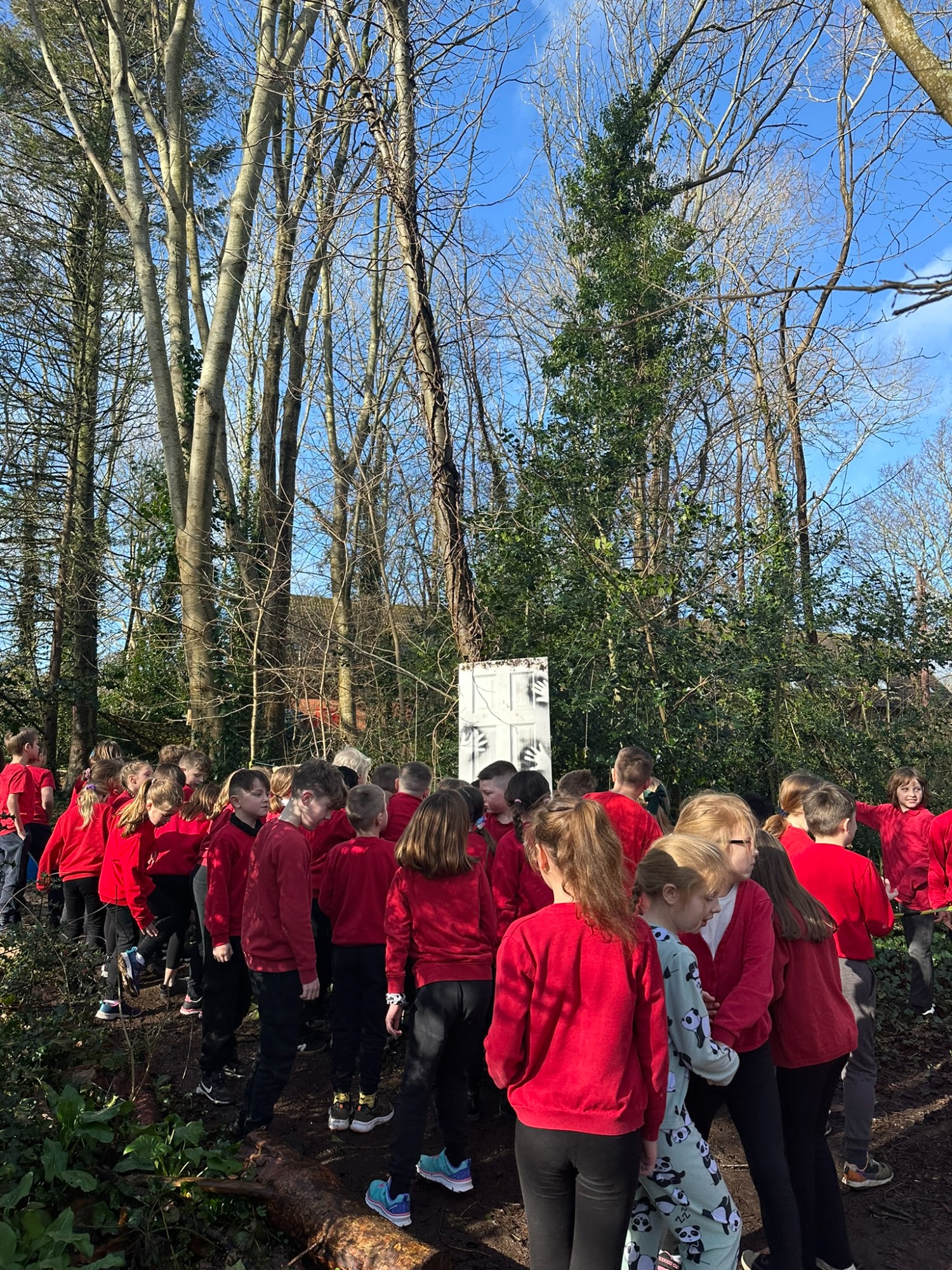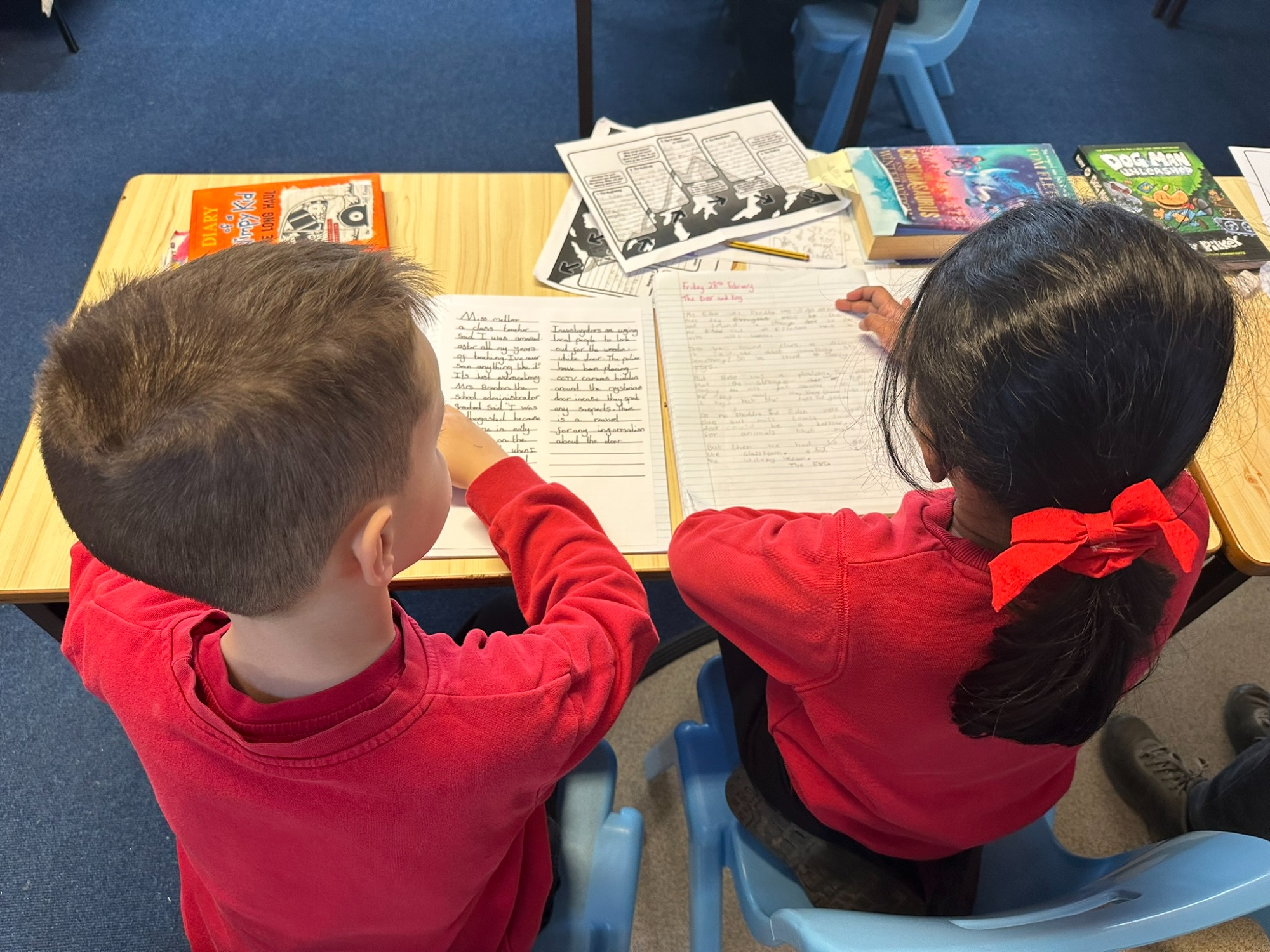Writing
The Door & Key
Whole school writing week February 2025
One wet and rainy morning, the teachers learnt that there had been some very strange things going on in the woods over half term! A mysterious door appeared and lots of keys were discovered all around the school. How did the door get there? Where did it lead to?
We used the door and keys as a hook for the whole school writing week. All children from reception to year 6 visited the woods to see the door before kick starting their week-long writing unit. The week ended with different classes getting together to celebrate and share each other’s work! A great success enjoyed by all!




